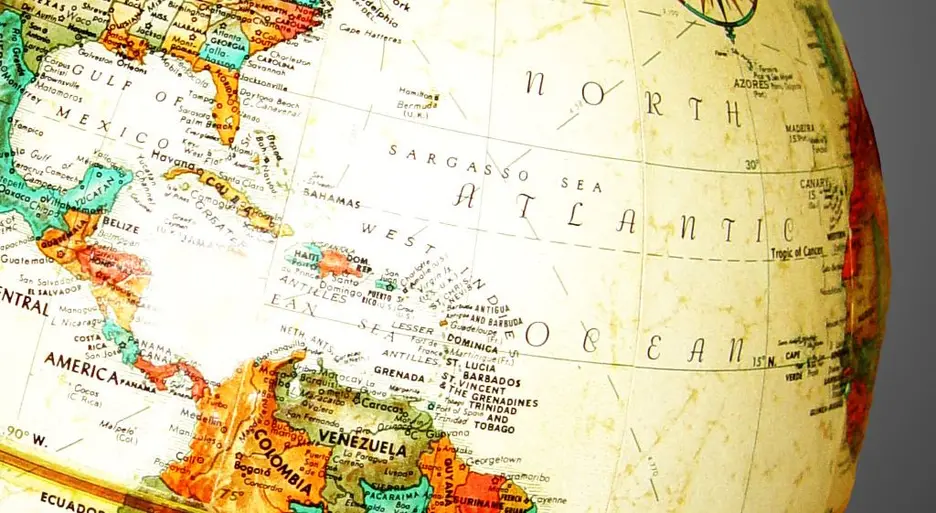Three ways to strengthen financing for private companies in the Caribbean

Asues, susus or panderos, as they are known in Spanish-speaking countries, promote financial education, savings, social inclusion and investment, and in Latin America and the Caribbean they are still alive and well. In fact, 18 percent of people in the region still seek loans from family, friends or informal lenders.
However, for companies on a growth trajectory, these informal options may not be enough. To improve their access to finance, I look to the banking sector for solutions.
If an emerging firm wants to buy cutting-edge technology, invest in research and development or expand its skilled labor, its first port of call is usually a bank. Yet, while 45 percent of firms in Latin America and the Caribbean use banks to finance working capital, in The Bahamas, it’s only 15 percent.
[caption id="attachment_5362" align="alignnone" width="744"] While 45 percent of firms in Latin America and the Caribbean use banks to finance working capital, in The Bahamas, it’s only 15 percent.[/caption]
While 45 percent of firms in Latin America and the Caribbean use banks to finance working capital, in The Bahamas, it’s only 15 percent.[/caption]
Banks can be powerful engines of development, but there is still untapped potential for downscaling and product diversification. By creating new financial products that promote social inclusion and environmental sustainability, banks can help firms grow while increasing their own profits. The Inter-American Investment Corporation (IIC) currently supports more than 1 million micro, small and medium-sized enterprises (MSMEs) through its portfolio of 198 transactions with financial institutions.
After securing financing, the next step for a firm is finding equity investments. That, however, is far from the norm. Regionally, investments financed by equity hover around 4%, and in The Bahamas, that number is halved. The IIC is increasing its product offerings in this segment – both through funds and direct capital investments.
The third step in a company’s growth is to diversify funding via fixed-income markets. Fixed income provides firms with a diversity of maturities, interest rates, ticket sizes and risk profiles depending on their circumstances. Longer tenors are especially critical to firms in agriculture, manufacturing and service sectors.
[caption id="attachment_5364" align="alignnone" width="745"] Only few companies in the Caribbean make it to the stock exchange[/caption]
Only few companies in the Caribbean make it to the stock exchange[/caption]
While private debt issuance in local markets has recovered since its low in 2008, it is still a third of what you find in developed markets like the US. One challenge is that any issuance with a rating lower than a local AAA generally struggles to access markets. And most of our region’s private debt is creditworthy but not AAA. The more bonds are issued, the more references we have to price future securities.
One last step in a company’s growth trajectory is a listing on the local stock exchange, where investors can purchase shares and take equity positions. The Mercado Integrado Latinoamericano (MILA) is the association of stock exchanges of Chile, Colombia and Peru. Together the three exchanges (and soon Mexico) aim to give investors a greater supply of securities, issuers and sources of funding. In the Caribbean, IPOs have benefited GraceKennedy, Commonwealth Bank and Goddard’s Enterprises. Yet, the reality is that only few companies get there.
So how do we smooth the path for companies?
In order to strengthen access to financing, we first need to deepen local capital markets. This is especially important for Caribbean family-owned businesses, many of which have comparative advantages and growth potential but remain wary of public audits, ownership and scrutiny.
Second is testing new structures. The IIC is increasing participation of institutional investors, sovereign wealth funds and impact investors in its projects. Social impact bonds could bring trillions from investors seeking sound investments that boost social and environmental sustainability.
And finally, we maintain an active dialogue with governments through the public sector of the Inter-American Development Bank (IDB), which helps us address regulatory issues and create an environment conducive to private-sector development.
Companies in the Caribbean have come a long way from local asues to where they are today. Our goal is to keep enabling their growth while scaling up our efforts to create positive impact.
Photo: FreeImages.com/ElvisSantana
LIKE WHAT YOU JUST READ?
Subscribe to our mailing list to stay informed on the latest IDB Invest news, blog posts, upcoming events, and to learn more about specific areas of interest.
Subscribe



